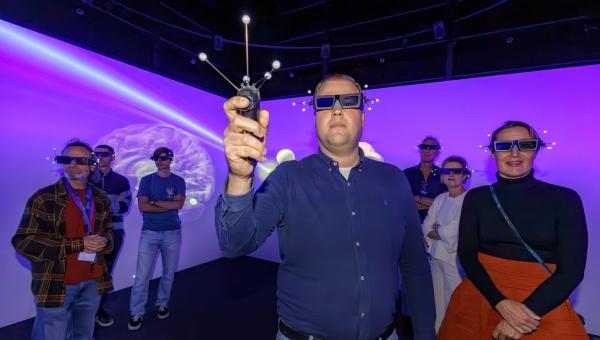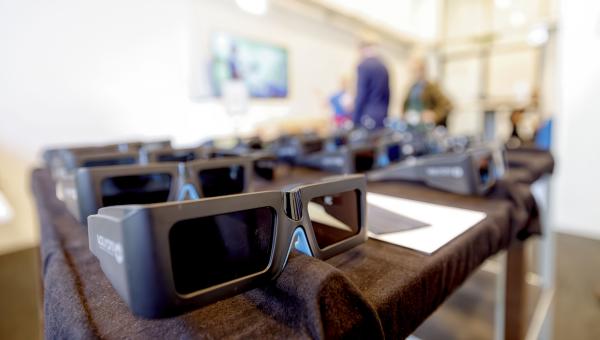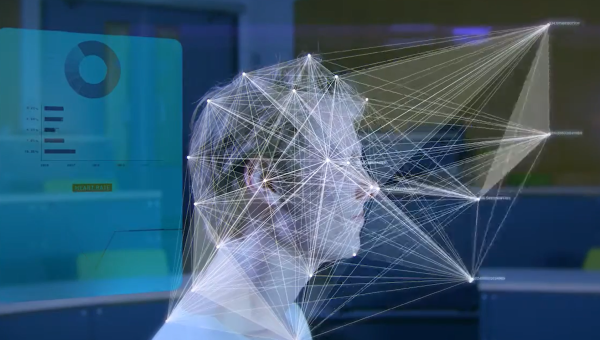DAF Technology Lab: Research & Education in Virtual Reality
The DAF Technology Lab is a unique research, education and training facility in virtual reality, mixed reality and augmented reality. The lab occupies virtual reality rooms with various behavior measurement technologies, VR equipment as well as two CAVE systems. These CAVEs (Cave Virtual Automatic Environment) offer the opportunity to experience virtual reality not individually but collaboratively through VR projection on four walls.
Goal
Our goals are to facilitate teachers to explore opportunities of VR, XR and AR in their education, to facilitate researchers to explore the VR, XR, and AR opportunities in their research, and to encourage the academic, societal and business community to explore VR, XR, and AR opportunities in training, development and research.
Unique CAVE systems
What makes the two CAVE systems in the DAF Technology Lab unique in the world is the full 360-degree VR experience, the high-quality combination of mixed reality and spatial audio, the tracking system that can follow a large number of users simultaneously to measure group dynamics, the teaching and training application, and the affordable solution they provide for education and research.
The lab was created thanks to an initial philanthropic donation from the PACCAR Foundation, the parent company of DAF Trucks NV and externally funded research projects to the lab team to measure new forms of education and training in a collaborative VR space, including funding from OPZuid, European Union, the Ministry of Economic Affairs and the Province of Noord-Brabant.
Using the CAVE systems for my classes brings students closer to the content I am teaching.
More information on the DAF Technology Lab:
-
Research in the DAF Technology Lab
Several externally funded research projects have been pushing the advancements of the DAF Technology Lab. Read more about these exciting research projects.
More information -

Education in the DAF Technology Lab
The educational opportunities in virtual reality are endless. Read more about how using these modern virtual reality technologies benefits your education.
More information -

Lab facilities in the DAF Technology Lab
The DAF Technology Lab features two CAVE systems with 360-degree visual and audio immersion, two high-end research cabins, and a range of sensing technologies. Read more about our facilities.
More information
InAVate Magazine
CAVE diving! Three-page feature article on our Cave Automatic Virtual Environment (CAVE) systems in the InAVate Magazine, the magazine for specifiers, installers and users of audio visual and related technologies in professional environments, describing the immersive world of education and research.
Sponsored by:
The lab has been funded bu a philantropic donation from the PACCAR Foundation, and grants from OPZuid, European Union, the Ministry of Economic Affairs and the Province of Noord-Brabant.





